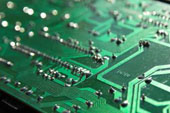
Purpose
To construct a simple electric circuit and identify its parts. After this experiment, you will be able to name the parts of the simple electric circuit and answer the question, “When does electricity flow in the circuit?”
Additional information
Current electricity is a form of electricity that flows out of electrical outlets. It delivers great amount of electricity that can harm you just like lightning. Electric current consists of electrons flowing in a conductor such as a metal wire. Electricity is a form of energy and it can also be transformed. An electric current moves along a conductor. The complete path taken by electric current is called a circuit. A simple electric circuit is made up of several parts. For electrons to flow in the wire there must be a source of power to give them a push just like a dry cell. It will allow electrons to flow in the wire. In return, the metal wire acts as a conductor that allows the electrons to move easily to and from the dry cell. The switch controls the flow of electron through the circuit and at the same time opens and closes the circuit. The bulb is the device which transforms electricity to light. The circuit is closed or complete when the electrons flow from the source and back again. On the other hand, the circuit is open when there is a break in the circuit and electricity does not reach the bulb.
Sponsored Links
Required materials
- half meter copper wire cut into three
- dry cell
- small flashlight bulb with socket
- switch
- electrical tape
- scissors
Estimated Experiment Time
Approximately 20 minutes
Step-By-Step Procedure
- 1. Get three pieces of copper wire and remove about half a centimeter of insulation at both ends.
- 2. Attach one wire to the positive side of the dry cell and secure it with electrical tape.
- 3. Then attach the other end to the right side of the light bulb.
- 4. Get another wire and tape it on the negative side of the dry cell.
- 5. Attach the other end to the left side of the switch.
- 6. Get the last piece of wire and wound it to the right side of the switch.
- 7. Next, attach it to the left side of the light bulb.
Note
Remove the insulator slowly to avoid cutting or damaging the wires. Do not play with the light bulb; it is made of very light materials. Avoid touching the bulb especially if it lights up because its surface can become hot.
Observation
How did you open and close the circuit? When you loosen the bulb and turned on the switch, what happened? What happened when you tighten the bulb and remove one of the wires? Does the bulb light up or not? What happens to the flow of electricity if a part in the circuit is missing?
Result
The parts of a circuit are the dry cell or the source, connecting wires, switch, and the device that uses the electricity just like the light bulb. You can open and close the circuit using the switch. When one part is missing, electricity will not flow. Electricity will only flow in the circuit if all parts are present or functioning well and when the circuit is closed or complete.
Sponsored Links
Take a moment to visit our table of Periodic Elements page where you can get an in-depth view of all the elements,
complete with the industry first side-by-side element comparisons!